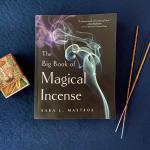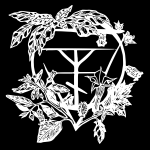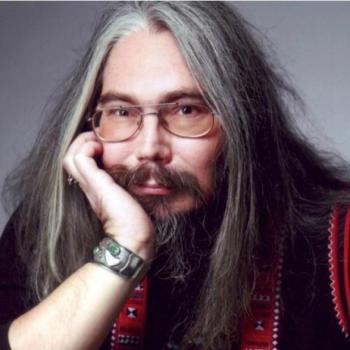The Witches’ Sabbath by Kelden
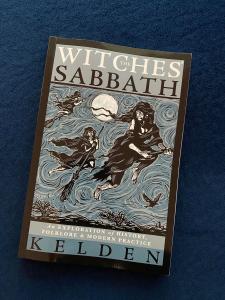
The Witches’ Sabbath and its associated imagery are a central component in my own practice, and perspective as a practitioner of traditional witchcraft, especially one that works with entheogenic herbs for spirit flight and gnosis. I was excited to see a book solely devoted to this topic, by a modern practitioner whose familiarity with this subject is evident in the ease in which they connect all of these separate elements. The Witches’ Sabbath: An Exploration of History, Folklore and Modern Practice, was written by Kelden and published by Llewellyn Worldwide in January 2022. This is going to be an important work in the ongoing study of this living phenomenon.
Preeminent witchcraft historian, Ronald Hutton says, “This book provides a comprehensive, compact and accurate survey of traditional beliefs surrounding the Witches’ sabbath and a practical introduction to an interesting and distinctive operative modern tradition which enacts them.”
The pre-modern concept of the Witches’ Sabbath is its own self-contained cosmology, which as a sentient force has influenced our modern magical practices and concepts of what is “traditional” witchcraft. The Witches’ Sabbath, the other worldly-nocturnal congregation of witches and spirits of all forms has become a vehicle for a specific mode of working, and metaphysical framework for modern traditional witchcraft.
The language of the Witches’ Sabbath tells the story of witchcraft as it has developed in Britain, Europe and colonial America. Rooted in folklore, land-centered practice and spirit flight; the witches’ sabbath is where this nexus of numinous power resides. The eternal gathering of all those who have sought to ride the hedge, calls out to us, a primeval orgy of auto-chthonic forces. Kelden acts as our intermediary introducing the reader to these eldritch powers.
Traditional Witchcraft
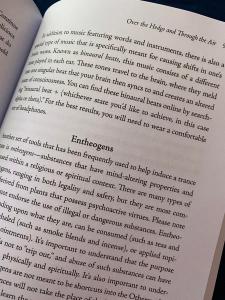
Kelden is an expert in the history and folklore associated with the practice Traditional Witchcraft. He is author of The Crooked Path (Llewellyn Worldwide), an important and influential work on modern traditional witchcraft and its origins. Kelden writes articles for By Athame & Stang, a traditional witchcraft blog on Patheos Pagan. Understanding the influences of this ever-evolving praxis is necessary in the conversation about what this looks like in modern magical practice.
Traditional Witchcraft, which is different from British Traditional Witchcraft, sheds much of the New Age and modern metaphysical accoutrements of other traditions. It is rooted in folk magic and spirit communication, including ancestor veneration and an animistic worldview. The Witches’ Sabbath is an important construct for traditional witches because it serves as the framework for many of our beliefs and practices.
The Witches Sabbath is where we can create, transform, and connect with other spiritual agencies. I like to think of it like a marketplace that is always open, where anyone can come to do business. The Sabbath is a liminal place; a destination that is traveled to but also that exists within every witch. We all have the ability to access this power, and return to this place over and over again. In my opinion, it is an actual place that we are traveling to, with real ties to the physical realm, while not physical in our sense of the term it is more concrete than a purely astral or ethereal realm. While spiritual in nature, the Sabbath is intimately tied to the physical realm and its pleasures.
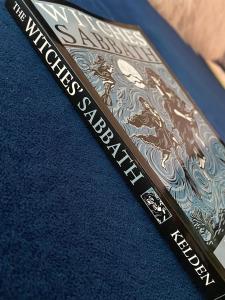
History, Supersition & Occult Gnosis
For practitioners, the historical standpoint of the sabbatic mythos is so important because it gives us a context for the environment in which these concepts have crystallized. It is through this realization that we carry these themes forward into modern practice. Beyond preserving this mythos as a relic of the past, we are able to breathe into it new life and find applications for our own witchcraft.
Kelden does an expert job of explaining the many different narratives that have been woven together to create the tapestry of the Witches’ Sabbath. Ecclesiastical demonology, statements given under torture, superstition, folklore and the pagan beliefs of various cultures all fed into this larger body of lore. The Sabbath is simultaneously rooted in the past, yet eternally changing and evolving. Modern Witches are able to tap into this current, pulling on these distinct threads to enact a wide variety of rituals and other magical acts.
Kelden presents in such a well-researched and organized way the connection points that all of these unique narratives have and how they have influenced, our perception, and experience of this phenomenon. The first part of the book effortlessly explains the origins of the Witches’ Sabbath, and its ancient counterparts. The reader is given a deeper understanding of what the Sabbath means through an explanation of the word’s etymology. The way people have discussed this phenomenon throughout history is important to its current place in our cosmology.
In sections on heresy, poisoning, nocturnal meetings, and the Devil; we are shown not only the historical provenance of these associations with the Sabbath, but also their occult implications for practitioners of folkloric witchcraft.
In the past, practitioners explored this path, calling it Sabbatic witchcraft and their writings had a profound influence on the development of modern traditional witchcraft. We meet these influential practitioners as introduced by Kelden, and explore ideas like “atavistic resurgence,” was a centrally important theme to individuals like Austin Osman Spare, Andrew Chumbley and Kenneth Grant. Kelden explains how these individuals and their work are different from other traditions of witchcraft, and the important of the Witches’ Sabbath to their cosmology.
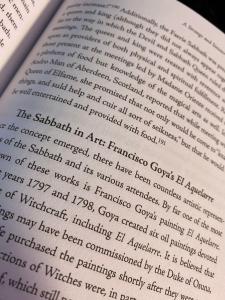
In today’s practice
Fairies, familiar spirits, maleficia and sex are all part of the fascinating lore of the Witches’ Sabbath. All of the legends, folkloric associations and superstitions are numinosity and reality combine. These points of congress are where we can tap into the associated power, and in understanding their connections create powerful magical responses in ourselves and the world around us. Kelden gives no shortage in rituals, spells and exercises that put the Witches’ Sabbath as a central component.
He discusses the important aspects of otherworld travel, and how the process works through presenting various instances, ways and modes of working with the Witches’ Sabbath as a framework for a variety of rituals. This is a really important part for me because it really shows the potential for a continued and progressive practice. It presents the Witches’ Sabbath as more than a nebulous place that you travel to for some undetermined purpose, but as a liminal jump point for endless ritual potential.
I really love the way that Kelden has presented the material in this book. It provides an engaging and thoughtful perspective to the reader on this important topic, and is a testament to the ever evolving nature of one of our most sacred rites.
I really love this book, and believe that it is one of the most comprehensive and up to date collections of modern and historical information on this topic, and that anyone interested in the Witches’ Sabbath as a modern magical practice should read it! Kelden and I share some differing opinions when it comes to spirit flight and entheogens, but i wanted this article to be about this amazing book THE WITCHES’ SABBATH. The conversation on spirit flight, the Witches’ Sabbath and the Witches’ Flying ointment is an ongoing one. Witchcraft is just as influenced by us and our perception, as we are of it. If you’re interested in reading my opinions on the section about entheogens you can find it on my Patreon for public viewing. HERE>
BY ATHAME AND STANG, KELDEN’S BLOG
THE WITCHES’ SABBATH AVAILABLE AT LLEWELLYN

